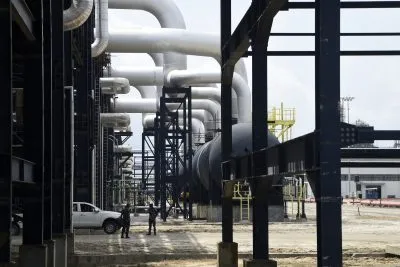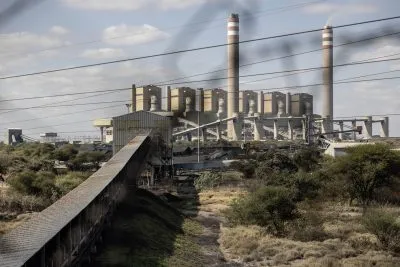With impeccable timing, the 2023 Africa Energy Indaba took place in early March in Cape Town. As the country was rocked by another wave of power cuts, South Africa’s minister for mineral resources and energy, Gwede Mantashe took to the stage to yet again claim that a solution would be found.
“Energy poverty is a dilemma that we must collectively resolve as it impedes Africa’s economic growth, resulting in poverty and inequality. This includes lack of access to electricity, unaffordability of energy, and, in our case, electricity interruptions.”
Few South Africans needed a reminder about the nature of energy poverty known locally as “load shedding”.
By late February, Eskom was reporting that 23 GW of generation was offline with more than 19GW out of service due to unplanned breakdowns, and another 4.2 GW down for planned maintenance. At a total of 27.4GW, that is roughly half of the country’s generating capacity of 54GW of installed power.
For years, much of the country has experienced rolling blackouts as the state’s failing power utility Eskom, hamstrung by a network of outdated plants (coal still accounts for 80% of its generation), political interference and executive in-fighting, struggles to supply the needs of the people. Organised criminal activities such as the theft of transmission lines and diesel fuels have further hit the beleaguered provider. CEO Andre de Ruyter resigned under political pressure in December; police later investigated an alleged plot to poison him.
The economic knock-on effects are substantial. The IMF has forecast that South Africa’s annual GDP will more that halve this year to 1.2%.
Major retailer ShopRite has reported that they had to spend ZAR550m ($30m) over the last half of 2022 on diesel to power generators for their refrigerators when the grid failed. Telecom giant MTN reported that ZAR695m ($39m) was lopped off its earnings for the year due to load shedding.
Another plan of action
Faced with the potential of economic meltdown, President Cyril Ramaphosa has promised solutions.
In February’s State of the Nation address he gave two important undertakings regarding electricity provision.
The first pledge was a declaration of a State of Disaster regarding the rolling blackouts, enabling the government to skirt bureaucratic protocols and act without the normal parliamentary oversight.
Under the 2002 National Disaster Management Act, the state president can declare a crisis on this level if existing legislation cannot deal with the problem.
This gives the government powers to release resources to tackle the disaster, appoint people to provide emergency services and to bypass existing laws in the procurement and delivery of goods and services.
Ramaphosa said the State of Disaster will enable government to provide practical measures that are needed to support businesses in food production, storage and retail supply chain, including for the rollout of generators, solar panels and uninterrupted power supply.
He claimed the State of Disaster will enable government to exempt critical infrastructure such as hospitals and water treatment plants from load shedding.
“It will enable us to accelerate energy projects and limit regulatory requirements while maintaining rigorous environmental protections, procurement principles and technical standards,” he argued.
It also means that infrastructure such as hospitals and water treatment plants are exempted from rolling blackouts.
But the opposition has opposed the measure, claiming that a State of Disaster would allow the ANC to sidestep normal procurement processes.
As if to forestall such claims, the president said the auditor-general will be brought in to ensure continuous monitoring of expenditure, in order to guard against any abuses of the funds needed to attend to this disaster – a nod to the scale of corruption that has bedevilled Eskom and other government agencies.
A new electricity minister
The second pledge is that a new post will be created, that of a minister of electricity, to “remain in office for as long as needed to resolved the energy crisis”.
According to Ramaphosa, the minister – later named as Kgosientsho Ramokgopa – will assume full responsibility for overseeing all aspects of the electricity crisis response, including the work of a National Energy Crisis Committee. He will also work with the Eskom board and management on ending load shedding and ensuring that the Energy Action Plan is implemented without delay.
Ramokgopa – previously the head of the president’s infrastructure and investment office – had warned in a February paper that ports, freight-rail lines, power plants, metropolitan roads, state schools and waste collection were all deteriorating.
“The hemorrhaging of technical and financial engineering skills in the country, the collapse of institutions and the dire ramifications of state capture have all conspired to degrade the quality of the country’s infrastructure offering.”
Yet he will have a hard time turning things round. Speaking to the press, Ramokgopa attempted to assure the public that his mandate to stop the rolling blackouts and restore confidence in Eskom, is achievable. He argued that public anger was justified.
“I can talk to you about corruption this and that but the country is impatient. It is not about diagnosing the problem. I must say to the country, this is how we are going to resolve it, these are the resources that are required to resolve it. This is how I am going to deploy the resources and this is the period that it is going to take.”
Longer term reforms
Beyond the immediate need for reform at Eskom, Ramokgopa is also faced with critical questions over the future of power generation in South Africa.
One of these is the urgent shift from coal-generation to renewables.
Legislative change will allow independent power producers to generate up to 100 MW for commercial distribution. In his State of the Nation address, Ramaphosa said that more than 100 projects that are expected to provide over 9,000 MW of new capacity over time. Western countries in 2021 also agreed to back a $8.5bn Just Energy Transition Partnership to help wean the nation off dirty fuels – the partnership will require a steady hand to ensure results.
However, time is not on the government’s side. South Africa will go to the polls in 2024 to deliver their judgment on Ramaphosa, and the opposition parties are lining up to make hay of the energy crisis.
The left-wing Economic Freedom Fighters capitalised on frustration with the government by calling a one day ‘national shutdown’ to protest the cost of living crisis, the impact load shedding.
Calling the one-day shutdown between a weekend and a public holiday made it difficult to truly assess the response to the call for a stay-away as many South Africans had decided to take the Monday off to create a four-day weekend break.
But unless Ramaphosa and Ramokgopa can bring immediate change to the energy sector – a significant stretch given the failure of previous efforts – such scenes may be increasingly common in the run-up to the election.
Want to continue reading? Subscribe today.
You've read all your free articles for this month! Subscribe now to enjoy full access to our content.
Digital Monthly
£8.00 / month
Receive full unlimited access to our articles, opinions, podcasts and more.
Digital Yearly
£70.00 / year
Our best value offer - save £26 and gain access to all of our digital content for an entire year!

 Sign in with Google
Sign in with Google 



